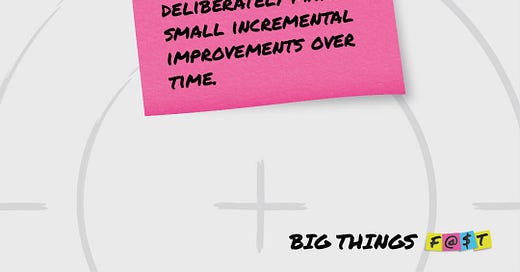Harnessing a Steadfast Internal Drive for Leadership Success
TL;DR: Managing the inertia that often prevents change, particularly in leadership roles, requires fortitude and the facilitation of applied critical thinking practices.
Recently, I stumbled upon the quote: "It’s only failure if you stop trying, otherwise, it’s an experiment." This echoes a sentiment often attributed to Einstein: “You never fail until you stop trying…
Keep reading with a 7-day free trial
Subscribe to Big Things F@$t™ to keep reading this post and get 7 days of free access to the full post archives.




